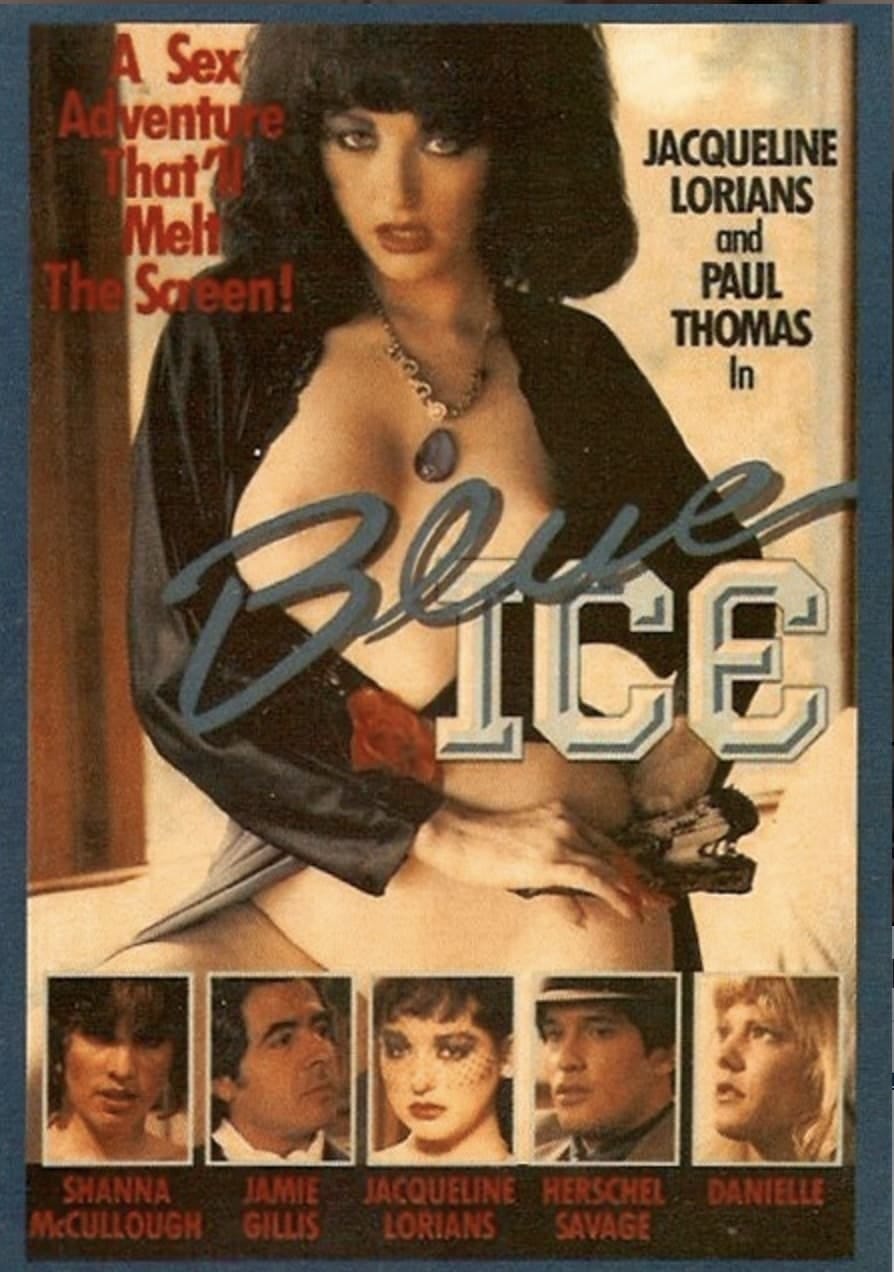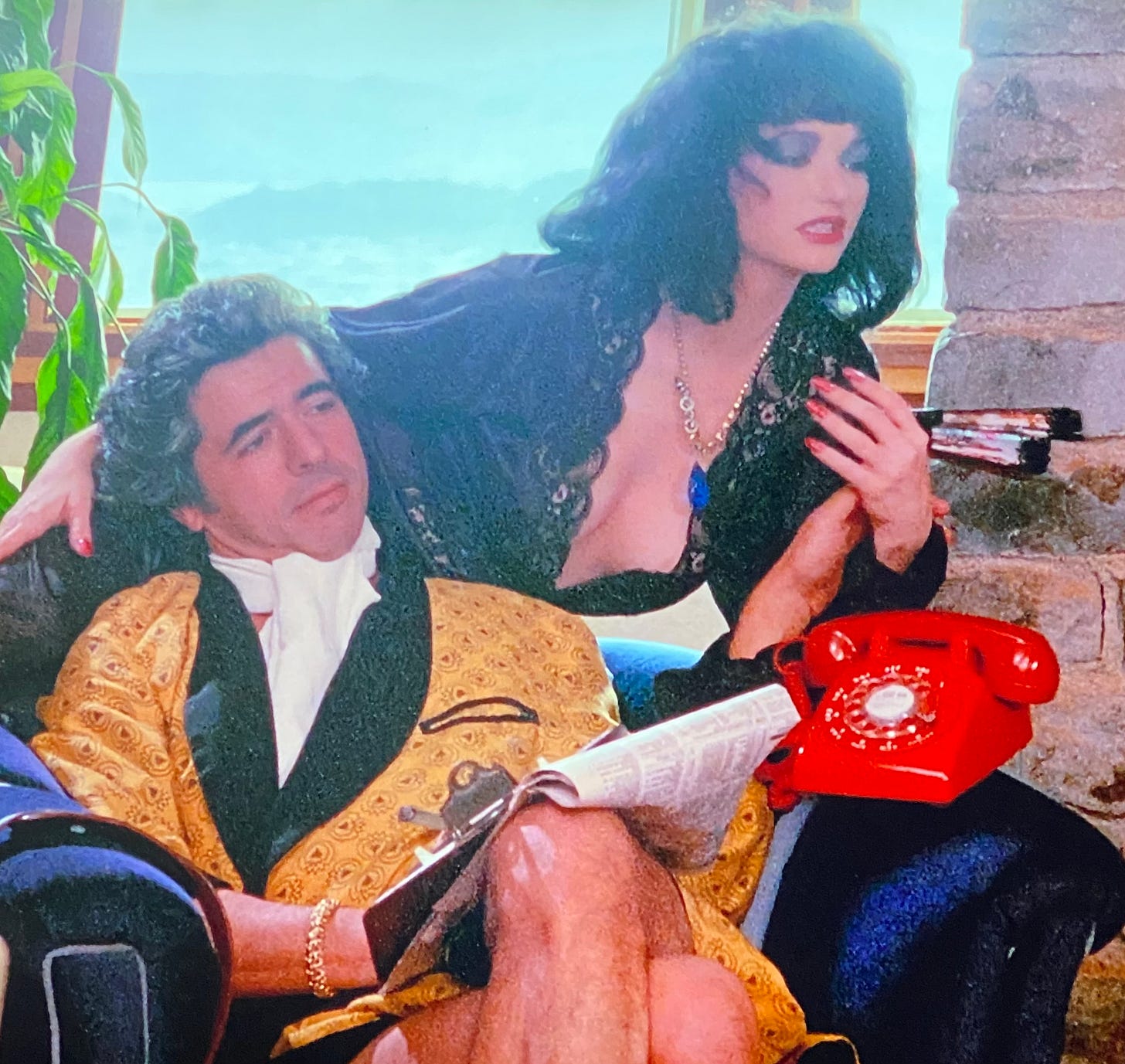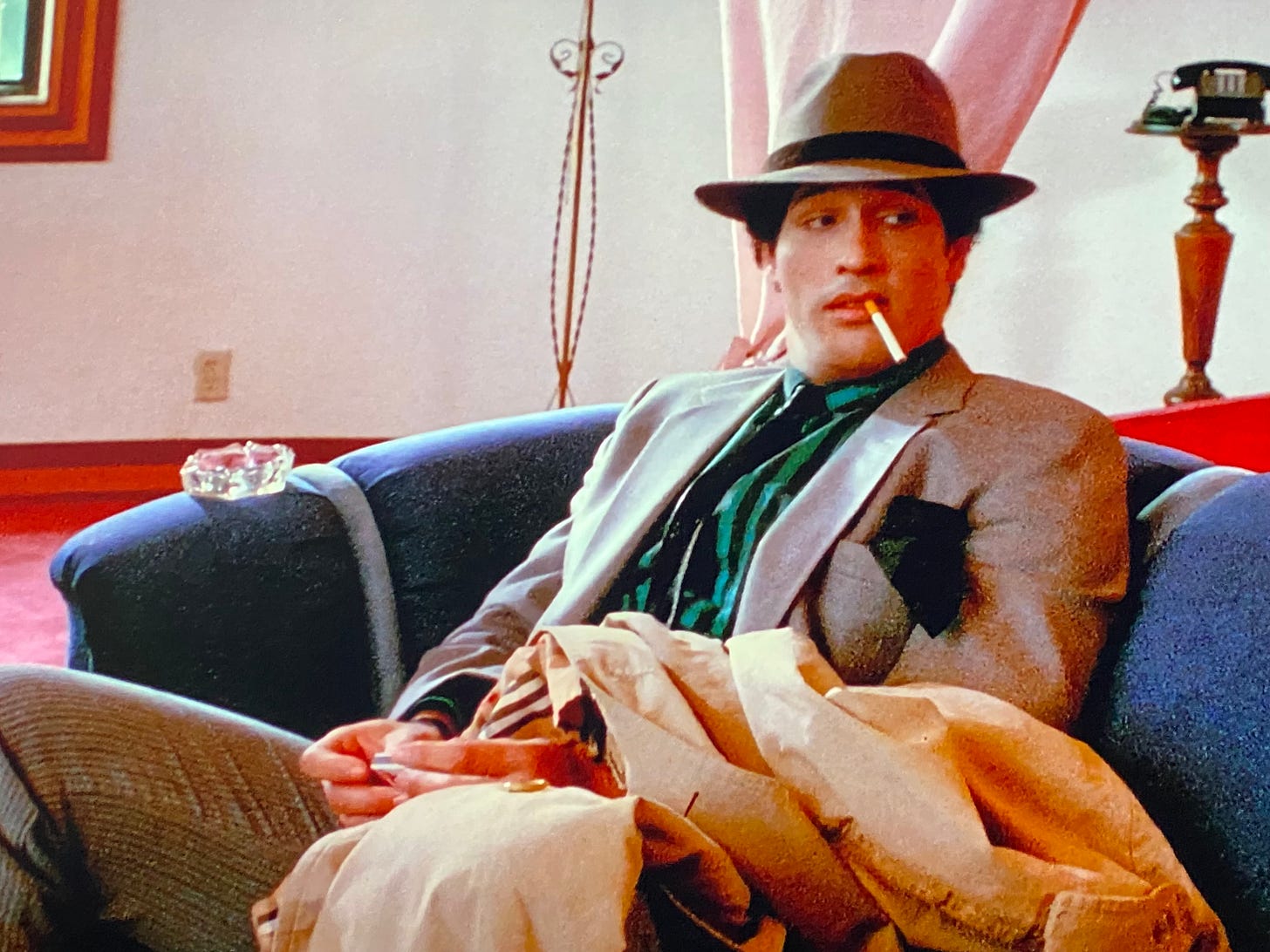Blue Ice
My Year of Trash Week 8: Part 2
“I think that porno sex is cartoon sex.”
—Nina Hartley
Cartoon
noun
1 a preparatory design, drawing, or painting (as for a fresco)
2 a drawing intended as satire, caricature, or humor a political cartoon
3 a ludicrously simplistic, unrealistic, or one-dimensional portrayal or version
Blue Ice is a 1985 film directed by Phil Marshak. It is a pornographic send up of noir and adventure films. It’s sort of like Philip Marlowe meets Indiana Jones with a lot more hardcore sex scenes. I hesitate to call it a parody. Blue Ice has comedic elements but it doesn’t attempt to poke fun of the genre it’s imitating. If anything, there is a respect for noir that led us here. Protagonist Ted Singer, played by Herschel Savage, is as close to a porno Marlowe as we might get, complete with trench coat, fedora, and voiceover narration.
The story follows Ted Singer, card shark turned PI, as he tracks an ancient book rumored to have the power to turn any woman into an insatiable nymphomaniac. Ted is hired by Big Man, a mob kingpin type, played by Jamie Gillis. As Ted embarks on his search, a secret cell of Nazis are searching for the book as well. With women under their command, they believe they will be able to fulfill the dream of the Third Reich. A fascist regime with the goal of controlling women’s sexual autonomy? Now I’ve heard everything.
Much like in reality, these Nazis are morons masquerading as masterminds. Even so, they are a caricature of Nazis. They are wholly anachronistic. They openly wear full black leather Nazi uniforms and red armbands out of the 1940s. They drive the classic 1960s VW bus. Stereotypes and caricature often have a symbiotic relationship. The leader of this group is a decrepit old man who cannot perform sexually, so he is content with watching his minions do his bidding. It’s is a simplified portrayal we couldn’t possibly expect to ever see in reality. Right?
This may also be the only porn film to use archival footage of Hitler and Nazi Germany.
The plot of Blue Ice meanders the way a typical noir might. Ted Singer is led from one location to the next, not by clues but by character interactions. It’s like Kiss Me Deadly if Mike Hammer fucked everyone he met as he was led down the path of some mysterious box, or in this case a book. Along the way, we meet an array of sleazy characters, such as Ron Jeremy’s Neil.
Neil is a customer of Singer’s prostitute roommate, Dottie, but as far as I’m concerned this is the real Ron Jeremy: a sweaty, mustachioed dirt bag with a big dick. There is a scene where he attempts to rape Dottie. The typical epithets—whore, bitch, slut—are slung. Neil is thwarted by Ted, who arrives and throws him to the floor, where his clothes falls off to review a karate gi. Someone who looks like Ron Jeremy trying to perform karate, with the balance you’d expect from someone who looks like Ron Jeremy, is comical. Ron Neil Jeremy is easily disposed of by a flower vase to his balding noggin. This is why I can’t consider Blue Ice a straight up parody. Its comedy isn’t derived from gimmicks poking fun of or overtly referencing the thing it’s based on.
I grew up on parody comedies like Hot Shots and Scary Movie. The jokes in those movies often took direct references from their source material and recontextualized them for humorous effect. A slight change in the familiar equals laughs. Tom Cruise riding a motorcycle in sunglasses on a tarmac with Kenny Loggins playing is cool. Charlie Sheen riding a motorcycle in sunglasses on a tarmac and hitting a dozen speed bumps is funny. Realizing the call is coming from inside the house sparks terror. Realizing the call is coming from inside the house and the killer is a bumbling idiot who’s made himself visible and asks the victim to turn around so he can hide again is funny. Nothing of the sort in Blue Ice. Its comedy tends to rely on its characters being totally stupid. Big guy get bonked on head and fall down go boom.
In his book, Understanding Comics, Scott McCloud discusses comics and cartooning as a language of iconography. It brings the human eye back to its primal roots. We recognized icons and symbols before we invented language. A simple smiley face—removed from the hyperrealism of, say, a photograph—contains all the necessary features for the human eye and mind to recognize it as a face. As long as the key features are present—eyes, nose, mouth, etc—the cartoonist is free to exaggerate, anthropomorphize, and manipulate to tell his or her stories. Homer Simpson’s eyes are simply two white circles with black dots. Our minds suspend disbelief to make them eyes. It is a cartoon because of its simplistic portrayal of humanity for humorous effect. Likewise, the sex in Blue Ice, and myriad pornos like it, is, to paraphrase Nina Hartley, cartoon sex.
There is an array of bodies having sex in ways that resemble but don’t reflect reality. Sometimes that means seeing a man in a red swastika armband, sweaty shaven pecs exposed, grow exhausted trying to keep up with the pelvic thrusting of a woman who cannot be pleased. Jamie Gillis is a captivating persona as Big Man, the smug mobster with no actual mob wearing a silk robe. Jacqueline Lorains is gorgeous in her blue eye shadow and black lace, writhing catlike in her trance. Gillis and Lorains appear as human beings but fuck with a mechanical accuracy. There always seems to be some vivid red or blue set piece in a scene. Something that feels out of place—for instance, Big Man has two signal red rotary phones next to his easy chair. I’m definitely a sucker for bright primary and secondary colors that seem to pull the eyes toward them. And it’s got a chill, dreamlike soundtrack that exhales 80s synth onto your earlobe. Of course, in noir fashion, our hero finds himself facing a double cross in the eye of a revolver before the trippy final scene. Aliens? Witches? Epilepsy? Something like that.
This is all to say, I enjoyed Blue Ice for the stupid campy cartoon that it is. Perhaps that is because the genre is so new to me. New genre, new world. Who can say if I’d enjoy it upon repeated viewings? Maybe I’m shedding some previously held cynicism. I’ve always known movies like this existed but never gave them a chance. I supposed I’d viewed them as beneath me. Watching it is still a strange experience: entertaining but not erotic. It’s a matter of coming to terms with the potential of sex as performance art, not necessarily something always intimate and private. Something like dancing or professional wrestling but with penetration.





